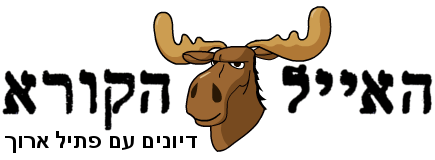בתשובה להאייל האלמוני, 11/08/04 4:18
 |
|
 |
||
|
||||
 |
Why don't you take a look at my comment above; I had an entirely different take on the poem than merely a "plug in the machine" approach. You may find the new angle you're seeking there.
|
 |
 |
 |
|
 |
||
|
||||
 |
the "new angle" for me, and perhaps for others, could be the bridge the poem builds between two seemingly incompatible ways to see the army: the external perspective of death, which you say you've seen in many places, and the internal, organizational-bureaucratic perspective of everyday life in the army which are not as dramatic. If you will, it's "Tironut" meets "M.K. 46".
The bridge is the system of regulation and attention to detail, which allows for a multifaceted prism of what the army is like. |
 |
 |
| חזרה לעמוד הראשי | המאמר המלא |
| מערכת האייל הקורא אינה אחראית לתוכן תגובות שנכתבו בידי קוראים | |
 RSS מאמרים |
כתבו למערכת |
אודות האתר |
טרם התעדכנת |
ארכיון |
חיפוש |
עזרה |
תנאי שימוש והצהרת נגישות RSS מאמרים |
כתבו למערכת |
אודות האתר |
טרם התעדכנת |
ארכיון |
חיפוש |
עזרה |
תנאי שימוש והצהרת נגישות
|
© כל הזכויות שמורות |
